For part two of our series on fastener locking methods, the focus will be on adhesives. In general, there are two ways to apply locking adhesives to a fastener joint. Liquid adhesive such as Loctite® can be applied to the threads at the time of assembly, or an adhesive patch can be pre-applied to the threads at the time of processing, prior to shipping to the customer.
Liquid Adhesives
The application of liquid adhesives can be done with a squeeze bottle, with a brush, or even rubbed on the threads with a glue stick applicator. One of the challenges with these types of application is getting the right amount on the threads to create the desired locking effect without wasting material. Some manufacturers of liquid thread locker have even developed precise metering guns to deliver the same amount of material for each application.
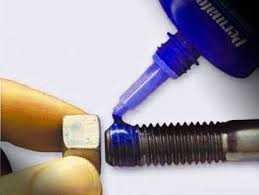
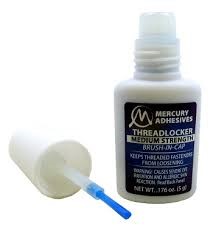
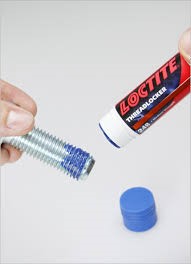
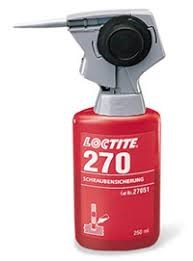
Manufacturers of thread locking material will give recommendations on how much material and which delivery system makes the most sense for your application, but how does thread locking adhesive work?
The common thinking is that thread locking adhesives simply act as a glue, bonding the male and female threads together so that they cannot rotate loose. Although this is true to some extent, the real benefit to locking adhesives is that they harden after assembly and fill any gaps between the threads. Rotational loosening occurs whenever outside forces (such as vibration) acting on the joint cause a loss of friction in the threads and bearing surface. If the force and the frequency are high enough, air gaps in the threads allow for the loss of friction. Eliminating the air gaps with thread locking adhesive is a very effective way to prevent rotational loosening.
Pre-Applied Adhesives
Pre-applied adhesives prevent rotational loosening in the same manner as described above, but they are applied at the manufacturer as a patch. The adhesive material is microencapsulated so that it will not dry until the fasteners are assembled, crushing the microcapsules and releasing the curing agent.
Some advantages of pre-applied adhesives include:
- No waste from over-application
- Adhesive is in the same location each time
- Cannot be forgotten by the assembler
- No mess
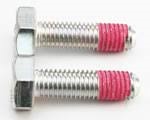
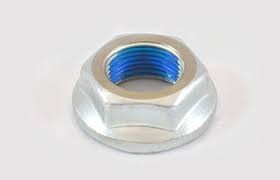
A disadvantage of pre-applied adhesives is that they have a limited shelf life which needs to be monitored. If parts have been sitting for too long before assembly, the patch material may dry out and be less effective. Most pre-applied adhesives have a shelf life of 1 – 4 years.
For more information on which thread locking adhesive is right for your application, visit us at www.bossard.com or contact us at ProvenProductivity@bossard.com.
Doug Jones
Applications Engineer
djones@bossard.com




